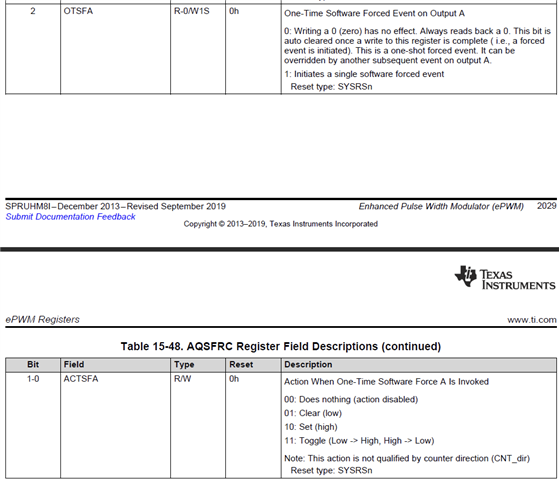Hi,
I'm implementing a hysteresis controller (bang-bang controller) using CLA and ADC sampling of the sensed signal (on which the regulation is required). I was using GPIO toggle in the CLA task to gate signals for driving the mosfets, but I figured I also need deadtime in my gating signals.
Therefore now I'm thinking of moving to EPWM module instead. Following are my concerns -
- Is it possible to software trigger the AQ module periodically and then use the deadband module to generate the final PWM output signal with the necessary deadbands.
- I want this periodic triggering to have no connection with the PWM time base register i.e., the switching frequency should only depend on the hysteresis levels I choose to compare with, inside my CLA task.
- And I want to call this function for software triggering of EPWM AQ inside the CLA task itself.
Can anyone clarify if the above is possible and how?
Thanks in advance


